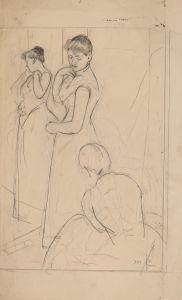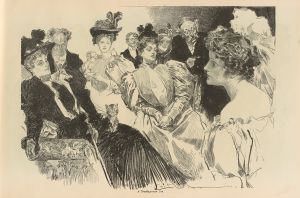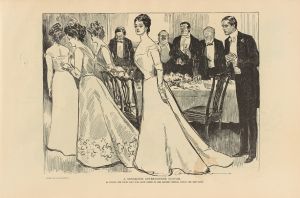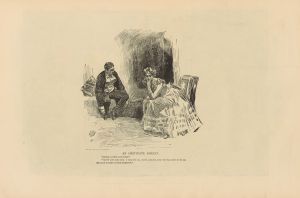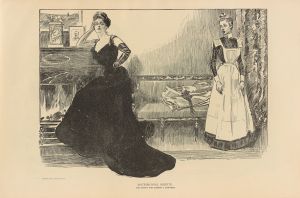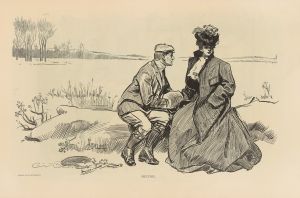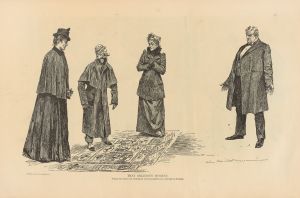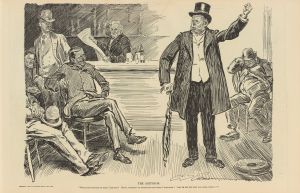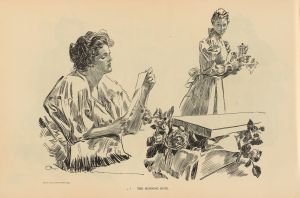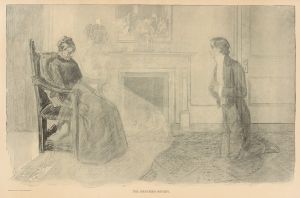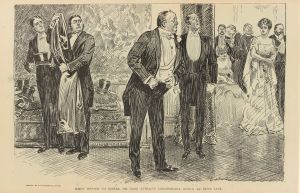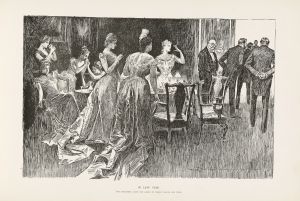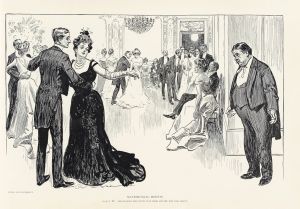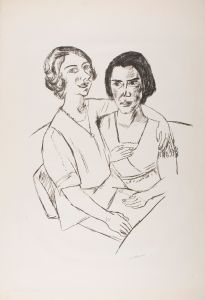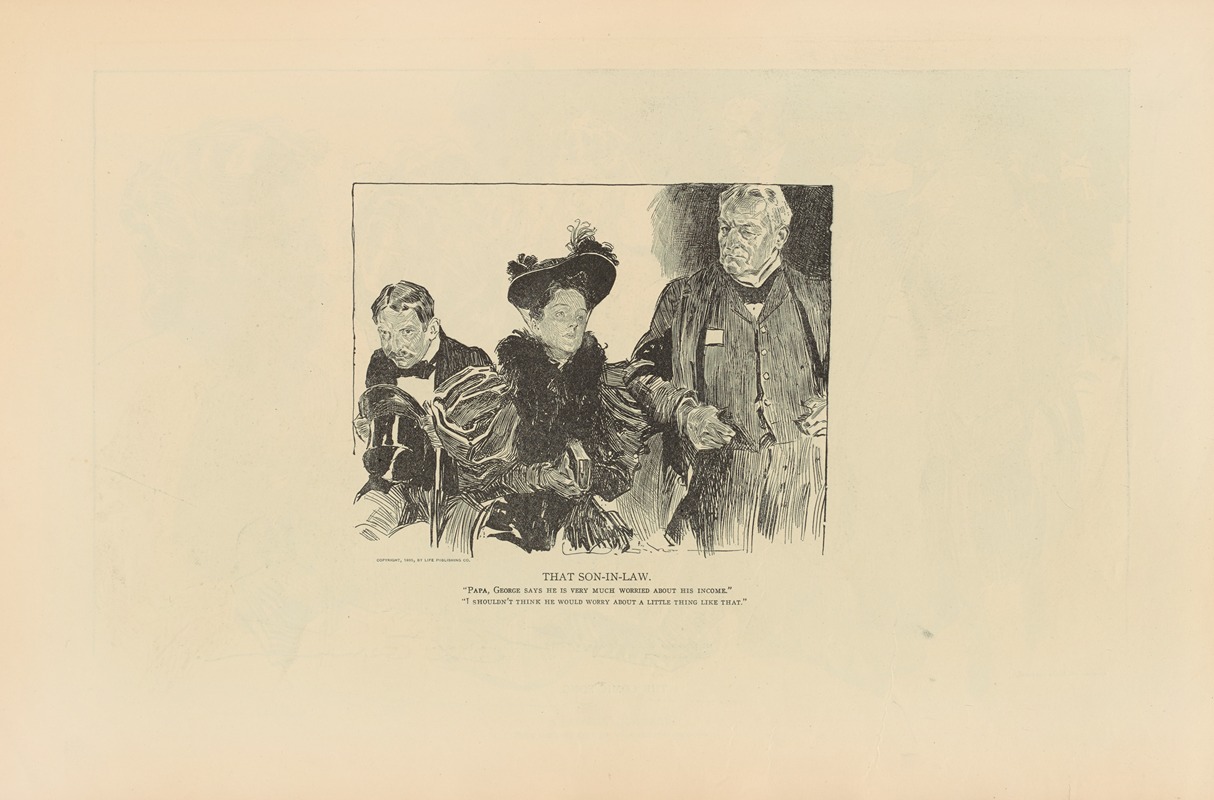
That son-in-law
A hand-painted replica of Charles Dana Gibson’s masterpiece That son-in-law, meticulously crafted by professional artists to capture the true essence of the original. Each piece is created with museum-quality canvas and rare mineral pigments, carefully painted by experienced artists with delicate brushstrokes and rich, layered colors to perfectly recreate the texture of the original artwork. Unlike machine-printed reproductions, this hand-painted version brings the painting to life, infused with the artist’s emotions and skill in every stroke. Whether for personal collection or home decoration, it instantly elevates the artistic atmosphere of any space.
Charles Dana Gibson was an influential American illustrator, best known for his creation of the "Gibson Girl," an iconic representation of the American woman at the turn of the 20th century. His work captured the social dynamics and cultural nuances of his time, often with a touch of humor and satire. One of his notable works is "That Son-in-Law," which exemplifies his keen eye for societal observations and his skillful artistry.
"That Son-in-Law" is a black-and-white illustration that reflects Gibson's characteristic style, marked by detailed line work and expressive characters. The illustration typically features a domestic scene, a common setting for Gibson's work, where he could explore interpersonal relationships and social hierarchies. In this particular piece, Gibson portrays a family dynamic involving a son-in-law, a subject that allows for the exploration of familial roles and expectations.
Gibson's illustrations were often published in popular magazines of the time, such as Life, Harper's Weekly, and Scribner's, reaching a wide audience and influencing public perceptions. His work was not only a reflection of the era's fashion and social mores but also a commentary on them. "That Son-in-Law" would have been part of this broader body of work, contributing to the dialogue on family and societal roles during the late 19th and early 20th centuries.
The humor in Gibson's work often stemmed from the exaggerated expressions and situations he depicted. In "That Son-in-Law," one can expect to find a similar approach, where the characters' interactions might be amplified to highlight the comedic or ironic aspects of the son-in-law's position within the family. This technique allowed Gibson to subtly critique or poke fun at the conventions of his time while entertaining his audience.
Gibson's influence extended beyond his illustrations; he played a significant role in shaping the visual culture of his era. The "Gibson Girl" became a cultural phenomenon, representing an idealized image of beauty, independence, and sophistication. While "That Son-in-Law" may not have reached the iconic status of the "Gibson Girl," it nonetheless contributes to the understanding of Gibson's artistic legacy and the themes he explored.
In summary, "That Son-in-Law" by Charles Dana Gibson is a testament to the artist's ability to capture and critique the social dynamics of his time through illustration. His work remains a valuable resource for understanding the cultural and societal norms of the late 19th and early 20th centuries, offering insight into the humor and complexity of human relationships.





